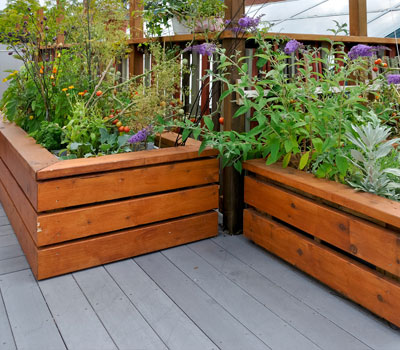How To Create An Accessible Care Home Garden
If you’re thinking of creating or improving your care home garden, there are a few things to consider before heading off to the garden centre…
People are living longer than ever before. As medicine and healthcare improve and people are more aware of the need for diet and exercise, society has increased its ability to live healthier lives for longer.
It was revealed that by 2039, one in 12 people in the UK will be over the age of 80. Those born in 2013 are now expected to hit 100. Old age can decrease mobility, and compromise the ability to tend to gardens properly, so it is important if you are thinking of creating a garden at your care home to address how the space can be made more accessible and user-friendly for the elderly.
It’s important to ensure the safeguarding of residents and staff in the garden. This is suggested by figures obtained by the Royal Society for the Prevention of Accidents, as in 2007 it was recorded that there were 115,000 garden falls, slips, and trips.
This guide will advise on keeping your care home garden safe and accessible – which will encourage members of residents’ families to share and enjoy the garden space too.
Raised flowerbeds
When it comes to the garden, i.e. when residents are trying to reach flowers and plant them, it gets harder to bend down for long periods of time and tend to them properly. However, if you’re worried about this, then raised flowerbeds can be a great way of avoiding this difficulty altogether. If residents are able to bend down for a short while, or are in a wheelchair or mobility scooter, then flowerbeds that are 18-24 inches off the ground will help. Alternatively, if residents can’t bend down at all, then opt for flowerbeds that are 30 to 36 inches off the  ground.
ground.
As we grow older, we often become more fragile, and as a result, more people end up needing assistance such as mobility scooters — this means you need sturdy pathways to accommodate. The paths should be around 3-4 ft or 91-121cm wide; the paths should provide residents with enough room and access to every corner of the garden. Try to ensure that pathways are made of a surface that isn’t slippy and provides enough grip. If you use a gravelled surface, then this should provide enough safety for anybody using your garden. Flagstone or tarmac, meanwhile, are cost-effective materials that will last a long time and offer support in terms of grip and safety.
A space for zoning out
Your garden may be accessible, but it also needs to be enjoyed. This means you need a place to zone out and relax. If you place an outdoor sofa or bench in the corner of your garden, then this can become a mini-retreat within an already tranquil setting – providing you with greater comfort within your garden. For a more alternative approach, embed seating areas within plants to create a floral atmosphere while residents are sitting down and relaxing.
The perfect decking
For all gardens, the decking is the centre-piece that hosts all of your outdoor activities. It can be a place where everyone sits and admires your green space! It’s important to choose the right composite decking boards that will be a reliable safe space within your care home garden. To boost accessibility even more, handrails should be built in by professionals.
A care home garden is a great space where everyone can socialise and, by making it more accessible for all, then residents, family members and staff can enjoy without any compromises.
See arbordeck.co.uk for decking options to create your accessible garden.





